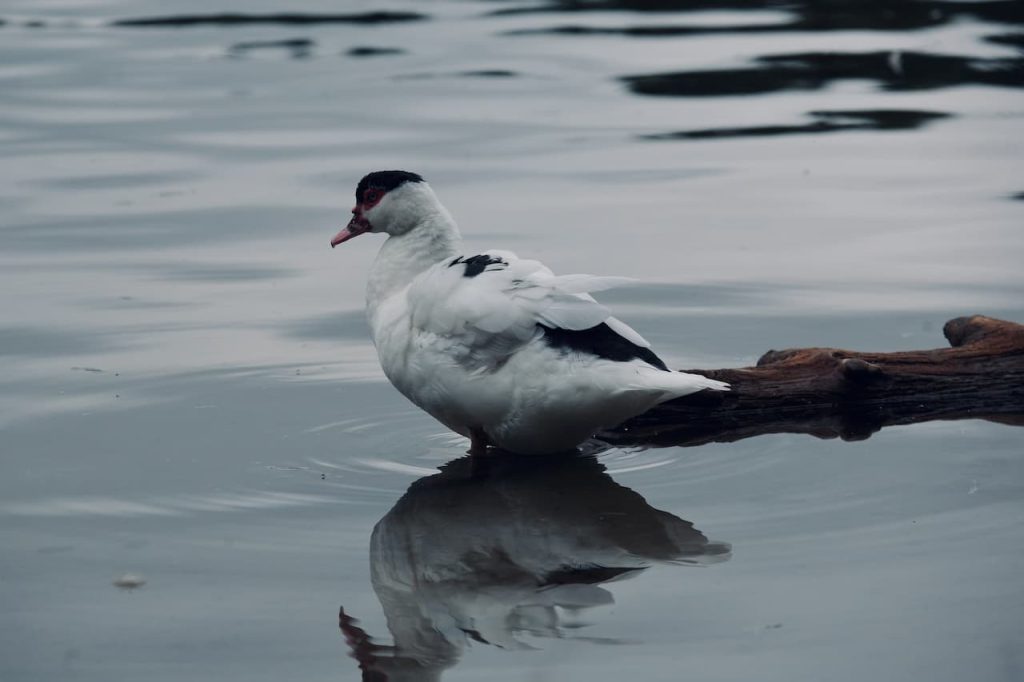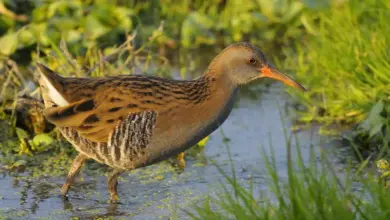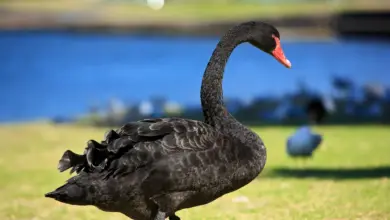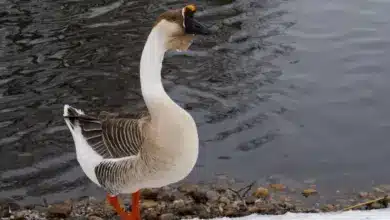Characteristics
Named for its distinctive black and white plumage, reminiscent of the colouration of the European Magpie, the typical example of the species is predominantly white with two large black areas on the back and top of the head.
As the bird ages the black cap will normally begin to be flecked with white and may eventually become completely white. Similar in shape to the Khaki Campbell, but more substantial, the Magpie is moderately streamlined with a somewhat upright carriage that suggests Indian Runner Duck in its ancestral bloodline. The bill is yellow or orange but turns green in older birds. The legs and feet are orange but may be mottled. The chest is rounded and the neck is moderately long.
Males weigh around 2.7 kg (6 lb) on average, and females around 2.5 kg (5½ lb), although the American standard specifies 1 lb (0.45 kg) lower for each.
They lay between 220–290 large green/blue eggs annually. They are a hardy variety, active foragers, and live for approximately 9 years.
Breeding
The Magpie Ducks is believed to have originated in the early 1900s, having been developed by Oliver Drake and M.C. Gower-Williams in Wales.
It is possible that they were selectively bred from the Belgian Huttegem, an old breed that was popular in the duck-raising area north of Brussels in the 19th century.
Descriptions of the Huttegem are remarkably similar to the modern Magpie Duck, and old pictures show many of the features of the Magpie including the colouring.
The Magpie Ducks were imported to the United States from Great Britain in 1963 but were not widely kept. It was admitted to the American Standard of Perfection in 1977, but it did not become popular in the US until 1984. It is still one of the rarer varieties of domesticated duck.
Although the newly hatched ducklings clearly show their markings, it is difficult for breeders to achieve the breed standards as the numbers of perfectly marked ducklings are low, especially regarding the bill and leg colouring.
The American Standard was relaxed in 1998 to take this difficulty into account.
Although the Black and White variety is the most common, there are also varieties of Blue and White, Dun and White, and a rare Chocolate and White colouring.

Diet / Feeding:
Ducks feed on larvae and pupae usually found under rocks, aquatic animals, plant material, seeds, small fish, snails, and crabs.
Instead of “teeth,” ducks have serrations (saw-like edges) on their bills that allow them to filter food out of the water.
Captive birds are often fed commercially prepared duck food pellets – if there are insufficient natural resources available to sustain them. As they feed on insects, they are very useful in ridding gardens or lawns of harmful bugs.
Feeding Ducks …
We all enjoy these beautiful birds and many of us offer them food to encourage them to come over and stay around – and it works! Who doesn’t like an easy meal?
However, the foods that we traditionally feed them at local ponds are utterly unsuitable for them and are likely to cause health problems down the road. Also, there may be local laws against feeding this species of bird – so it’s best to check on that rather than facing consequences at a later stage.
- Foods that can be fed to Ducks, Geese and Swans to survive cold winters and remain healthy when food is scarce in their environment.
Please note that feeding ducks and geese makes them dependent on humans for food, which can result in starvation and possibly death when those feedings stop. If you decide to feed them, please limit the quantity to ensure that they maintain their natural ability to forage for food themselves – providing that natural food sources are available.
Copyright: Wikipedia. This article is licensed under the GNU Free Documentation License. It uses material from Wikipedia.org … Additional information and photos added by Avianweb.
Please Note: The articles or images on this page are the sole property of the authors or photographers. Please get in touch with them directly concerning any copyright or licensing questions. Thank you.






